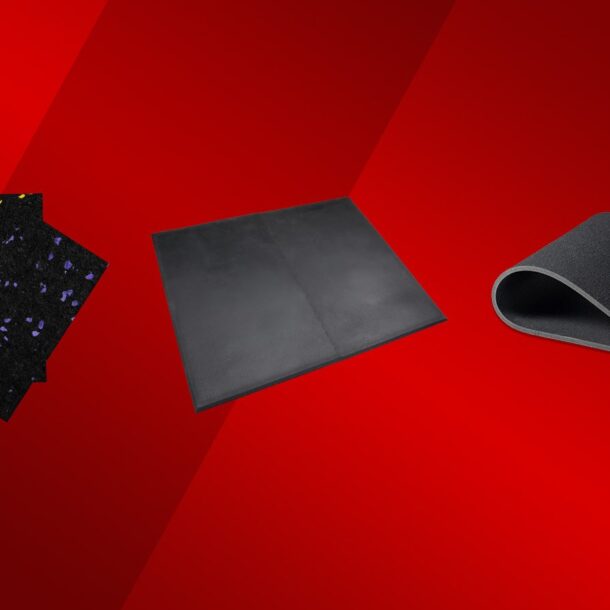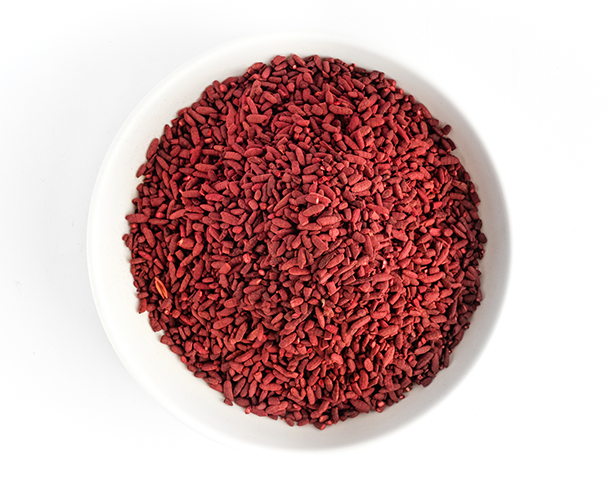
How Long Does Pre-Workout Last? Time Your Boost for Next-Level Performance – Breaking Muscle
Any experienced gamer understands the idea of a power-up — an occasional bonus that gives a temporary benefit to help the player complete an objective.
Whether it’s a mustachioed plumber who touches a star and turns invincible while a catchy jingle plays or a race car driving over a nitrous canister for high-speed support, power-ups work. The only downside is that the advantage is fleeting and sometimes disappears just as you finally learn how to harness it.
In the gym, one of the most common real-world “power-ups” comes in the form of pre-workout supplements. By providing your body with specialized ingredients, you can get the upper hand on daily fatigue and potentially complete more reps with more weight, leading to a higher intensity training session and, ultimately, greater results.

However, just like in the games, timing is everything. For maximum benefit, you want to time your pre-workout to deliver the biggest boost right when you need it. Nobody wants to be flying through their warm-up and then sputtering into their hardest sets. Here’s everything you need to know to capitalize on your pre-workout boost before it’s game over.
How Long Does Pre-Workout Last?
Pre-Workout Timing and Dose
Half-life isn’t just another convenient gaming metaphor, it’s also the term that relates to the duration of a supplement’s effects on your body. The longer an ingredient’s half-life, the longer it essentially stays in your system delivering its effects.
However, those effects gradually decrease as your body processes and digests the supplement, leaving a diminished amount of it circulating through your body. When you take an effective dose of a particular supplement (or a formulated supplement blend like a pre-workout), you’ll likely notice certain results almost immediately, before they peak and eventually taper off as the ingredients reach their half-lives.
Generally speaking, you want to take your pre-workout, a short time before you begin your training session. Depending on how thorough your warm-up is, consider taking your pre-workout 20 to 60 minutes before arriving at the gym. That should generally allow enough time for the nutrients to circulate through your system and deliver their supercharge by the time you’re knee-deep into heavy squats.
Here’s a more specific look at the optimal timing and dosage for some of the most common pre-workout ingredients.
Caffeine
Caffeine is the Tetris of pre-workouts — even people who don’t play video games are aware of its influence, while they might not really be clear on the details. As a supplement, caffeine has been shown to improve anaerobic power output and aerobic endurance, decrease feelings of fatigue, support mental focus, and improve overall energy and performance. (1)(2)

An effective dose of caffeine is roughly two to three milligrams per kilogram of body weight, or around 165 to 245 milligrams for a 180-pound (82-kilogram) person. (1) Caffeine hits peak concentration in most peoples’ systems within 45 minutes, but could be as long as two hours depending on their overall constitution. The typical half-life of caffeine is three to seven hours, depending on factors such as general activity level, body fat mass, and (interestingly) cigarette or alcohol use. (3)(4)
With a potentially long half-life — meaning caffeine is active in your system for a relatively long time — lifters who train in the late afternoon or evening would be better off choosing a non-stimulant pre-workout to get a workout boost without affecting your sleep and post-workout recovery.
Creatine
While some sports supplements are backed by little, if any, credible research, creatine monohydrate is one of the most thoroughly researched supplements on the market. Decades of in-depth data support the benefits of creatine, ranging from increased muscle growth and strength to improved short-term recovery, even improved brain health and cognitive function. (5)(6)
Creatine dosing and timing is somewhat unique, in that it’s not known for delivering immediate effects. Instead, common recommended practice is to saturate your body’s creatine stores for one to several weeks — either by using a short-term “loading phase” (taking five grams four times per day) for one week or by taking a standard “maintenance dose” (five grams per day) for up to 30 days. (7)
Taking a single dose of creatine has not been shown to be beneficial. (8) A standalone dose of creatine is very likely not harmful. However, if you’re not consistently taking creatine, a lone serving will offer no significant benefit.
Beta-Alanine
Beta-alanine is a popular and relatively common ingredient in pre-workout formulas because it’s been shown to improve short-term endurance, increase strength and power output, and decrease fatigue. (9)(10)

Beta-alanine is similar to creatine, in that consistent use (four to six grams per day in divided doses) has shown to deliver significant results. However, unlike creatine, taking beta-alanine sporadically in lower doses (one and a half to two grams) does appear to be beneficial, so regular intake may be useful but not necessary. (11)
With all that it offers by way of improved performance, beta-alanine does have a relatively short half-life. After roughly one hour, benefits significantly drop. Take this into consideration if your pre-workout contains beta-alanine — waiting too long to hit the hard sets may leave you missing out on its key benefits.
Arginine
Arginine is typically categorized as a “non-essential amino acid,” meaning you can get all the arginine your body needs for health and basic function through diet alone without specific supplementation. However, to use arginine as a strategic sports supplement, taking a dedicated supplement can be much more beneficial.
Doses of one and a half to three grams have been shown to improve athletic performance and decrease levels of fatigue. (12) Arginine’s primary method of action is by working as a nitric oxide (NO) booster. NO is associated with increased blood flow and stronger muscle contractions, making it a popular choice for the weight room as well as the bedroom. (13)
Arginine is relatively fast-acting and can reach peak effectiveness in as little as 20 minutes, with a half-life of up to two hours. (13) The combination of improved performance, relatively quick-hitting impact, and relatively long duration make it a tried and true pre-workout staple.
Citrulline
In some ways, citrulline is to arginine what the Power Glove was to the Wii Fit. Citrulline is a precursor to arginine, meaning citrulline essentially helps your body process arginine while delivering its various effects. On its own, citrulline yields similar, and potentially greater, effects on NO production compared to arginine. (14)(15) This can lead to an even more significant boost to circulation, muscle contractions, and endurance.
Citrulline is shown to be effective when three to six grams are taken per serving, and it yields a half-life of roughly one hour. Interestingly, higher doses of citrulline may slightly increase the effective duration of benefits, although they’re not necessarily associated with greater performance benefits. (16)
Benefits of Pre-Workout
The benefits of a pre-workout formula will largely depend on its specific ingredients. While you can generally expect to feel “more energy” from a pre-workout, the specific blend of components will affect the impact on your workout. By checking the labels and knowing what to look for, you can tailor your supplement plan to your training and goals.
Enhanced Mental Alertness and Energy
Likely the most common reason a lifter would use a pre-workout supplement, these formulations are designed to kickstart your engines when you’re dragging. A straightforward physical and mental energy boost is one of the most common benefits of any pre-workout. While caffeine is one reliable component, it’s not the only way to perk up before a hard workout and many efficacious pre-workouts are designed without caffeine.
Improved Strength and Power
Many pre-workouts may help you slap a few more pounds on the bar, either by eliciting stronger muscle contractions, stimulating your central nervous system, or other mechanisms. Moving more weight during a workout can trigger a greater strength stimulus, leading to a more productive workout.

Similarly, explosive short-term power (whether lifting weights or moving your body while sprinting or jumping) can be improved by many pre-workout ingredients via the same processes.
Increased Endurance
By delaying the onset of fatigue, reducing the sensation of fatigue (so you simply don’t “feel” as tired), or increasing your body’s ability to sustain long-term activity, a pre-workout can give you a boost toward the tail-end of a training session.
Being able to train longer than usual — whether it’s additional sets for more lifting volume or spending a few more minutes in a cardio session — can lead to greater long-term progress.
Faster Recovery Between Sets
Recovering between workouts is relatively easy. You’ve got hours and hours to eat, sleep, and relax. Recovering between sets is a different beast entirely. 60 or 90 seconds never seem to go so fast when you’re outside of the gym.
Many pre-workout ingredients improve your body’s ability to recover in short-term periods, including between sets. For example, creatine and beta-alanine can both increase your body’s ability to produce ATP. ATP is basically “fuel” for your muscle cells, so you’re recharging them more quickly and they’re ready to work in the next set sooner.
Side Effects of Pre-Workout
For all of the potential benefits they can offer, pre-workouts also offer some potential side effects. Here’s what to watch out for when adding a pre-workout to your training regimen. Note that some side effects can be mitigated by monitoring the doses of individual ingredients found in your pre-workout.
Digestive Upset
Unfortunately, certain supplement manufacturers have a “more is always better” approach to pre-workouts. This is particularly noticeable when companies treat milligrams of caffeine like a 21st century arms race.
While triple-digit caffeine levels are common and can definitely be effective, excessive caffeine intake can be a surefire way to sidetrack your workout with an upset stomach. Creatine is another popular ingredient which, depending on your individual response, may potentially lead to GI distress in some people.
Overstimulation
Taking a pre-workout and being fully amped up before you hit a deadlift PR is a great thing. Being fully amped up on the car ride home from the gym while sitting in traffic is definitely not a great thing.

When you choose to use a pre-workout, take steps to make sure you leave it all in the gym. Know your personal tolerance, read labels and check dosages, and time your pre-workout properly. Again, if you’re training later in the day and want to ensure a good night’s rest by avoiding stimulants, look for a pre-workout that’s specifically non-stimulating.
Skin Tingles
One side effect uniquely common to pre-workouts which contain beta-alanine is a “tingle” or itch. It’s typically caused by an overly high dose and is relatively short-lived, often lasting less than an hour. It’s considered to be caused by a type of sensory overload, rather than an actual allergic, histamine-based reaction. (17)
Interestingly, not all people consider this a “side effect” and some eagerly anticipate the sensation. It’s an individual preference, but the key is to remember that an effective dose is typically less than the tingle-producing dose. So if you’re lacking the itch, it doesn’t necessarily mean your supplement’s not working.
Level-up Your Pre-Workout
The overriding purpose for a pre-workout formula is to increase mental alertness and physical energy, improve endurance and/or power output, and enable a high-intensity training session. By paying a little extra attention to when you take your pre-workout, you might be able to conquer the final boss (last set) of your toughest workout.
References
- Guest, N. S., VanDusseldorp, T. A., Nelson, M. T., Grgic, J., Schoenfeld, B. J., Jenkins, N. D. M., Arent, S. M., Antonio, J., Stout, J. R., Trexler, E. T., Smith-Ryan, A. E., Goldstein, E. R., Kalman, D. S., & Campbell, B. I. (2021). International society of sports nutrition position stand: caffeine and exercise performance. Journal of the International Society of Sports Nutrition, 18(1), 1. https://doi.org/10.1186/s12970-020-00383-4
- Grgic J, Grgic I, Pickering C, et alWake up and smell the coffee: caffeine supplementation and exercise performance—an umbrella review of 21 published meta-analysesBritish Journal of Sports Medicine 2020;54:681-688.
- Skinner, T. L., Jenkins, D. G., Leveritt, M. D., McGorm, A., Bolam, K. A., Coombes, J. S., & Taaffe, D. R. (2014). Factors influencing serum caffeine concentrations following caffeine ingestion. Journal of science and medicine in sport, 17(5), 516–520. https://doi.org/10.1016/j.jsams.2013.07.006
- Temple, J. L., Bernard, C., Lipshultz, S. E., Czachor, J. D., Westphal, J. A., & Mestre, M. A. (2017). The Safety of Ingested Caffeine: A Comprehensive Review. Frontiers in psychiatry, 8, 80. https://doi.org/10.3389/fpsyt.2017.00080
- Chilibeck, P. D., Kaviani, M., Candow, D. G., & Zello, G. A. (2017). Effect of creatine supplementation during resistance training on lean tissue mass and muscular strength in older adults: a meta-analysis. Open access journal of sports medicine, 8, 213–226. https://doi.org/10.2147/OAJSM.S123529
- Rawson, E.S., Venezia, A.C. Use of creatine in the elderly and evidence for effects on cognitive function in young and old. Amino Acids 40, 1349–1362 (2011). https://doi.org/10.1007/s00726-011-0855-9
- Kreider, R. B., Kalman, D. S., Antonio, J., Ziegenfuss, T. N., Wildman, R., Collins, R., Candow, D. G., Kleiner, S. M., Almada, A. L., & Lopez, H. L. (2017). International Society of Sports Nutrition position stand: safety and efficacy of creatine supplementation in exercise, sport, and medicine. Journal of the International Society of Sports Nutrition, 14, 18. https://doi.org/10.1186/s12970-017-0173-z
- Negro M, Cerullo G, Perna S, Beretta-Piccoli M, Rondanelli M, Liguori G, Cena H, Phillips SM, Cescon C and D’Antona G (2022) Effects of a Single Dose of a Creatine-Based Multi-Ingredient Pre-workout Supplement Compared to Creatine Alone on Performance Fatigability After Resistance Exercise: A Double-Blind Crossover Design Study. Front. Nutr. 9:887523. doi: 10.3389/fnut.2022.887523
- Maté-Muñoz, J.L., Lougedo, J.H., Garnacho-Castaño, M.V. et al. Effects of β-alanine supplementation during a 5-week strength training program: a randomized, controlled study. J Int Soc Sports Nutr 15, 19 (2018). https://doi.org/10.1186/s12970-018-0224-0
- Berti Zanella, P., Donner Alves, F., & Guerini de Souza, C. (2017). Effects of beta-alanine supplementation on performance and muscle fatigue in athletes and non-athletes of different sports: a systematic review. The Journal of sports medicine and physical fitness, 57(9), 1132–1141. https://doi.org/10.23736/S0022-4707.16.06582-8
- Trexler, E. T., Smith-Ryan, A. E., Stout, J. R., Hoffman, J. R., Wilborn, C. D., Sale, C., Kreider, R. B., Jäger, R., Earnest, C. P., Bannock, L., Campbell, B., Kalman, D., Ziegenfuss, T. N., & Antonio, J. (2015). International society of sports nutrition position stand: Beta-Alanine. Journal of the International Society of Sports Nutrition, 12, 30. https://doi.org/10.1186/s12970-015-0090-y
- Viribay, A., Burgos, J., Fernández-Landa, J., Seco-Calvo, J., & Mielgo-Ayuso, J. (2020). Effects of Arginine Supplementation on Athletic Performance Based on Energy Metabolism: A Systematic Review and Meta-Analysis. Nutrients, 12(5), 1300. https://doi.org/10.3390/nu12051300
- Koolwal A, Manohar J. S, Rao TSS, Koolwal GD. l-arginine and Erectile Dysfunction. Journal of Psychosexual Health. 2019;1(1):37-43. doi:10.1177/2631831818822018
- Agarwal, U., Didelija, I. C., Yuan, Y., Wang, X., & Marini, J. C. (2017). Supplemental Citrulline Is More Efficient Than Arginine in Increasing Systemic Arginine Availability in Mice. The Journal of nutrition, 147(4), 596–602. https://doi.org/10.3945/jn.116.240382
- Gonzalez, A. M., & Trexler, E. T. (2020). Effects of Citrulline Supplementation on Exercise Performance in Humans: A Review of the Current Literature. Journal of strength and conditioning research, 34(5), 1480–1495. https://doi.org/10.1519/JSC.0000000000003426
- Moinard, C., Nicolis, I., Neveux, N., Darquy, S., Bénazeth, S., & Cynober, L. (2008). Dose-ranging effects of citrulline administration on plasma amino acids and hormonal patterns in healthy subjects: the Citrudose pharmacokinetic study. The British journal of nutrition, 99(4), 855–862. https://doi.org/10.1017/S0007114507841110
- Liu, Q., Sikand, P., Ma, C., Tang, Z., Han, L., Li, Z., Sun, S., LaMotte, R. H., & Dong, X. (2012). Mechanisms of itch evoked by β-alanine. The Journal of neuroscience : the official journal of the Society for Neuroscience, 32(42), 14532–14537. https://doi.org/10.1523/JNEUROSCI.3509-12.2012
Featured Image: Parilov / Shutterstock
Related Articles

2023 Healmyselfnow @ All Rights Reserved

